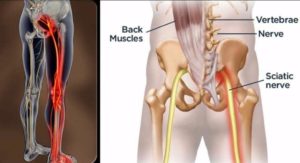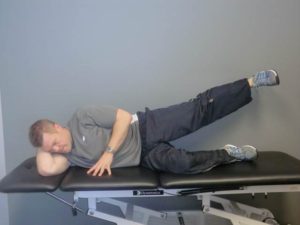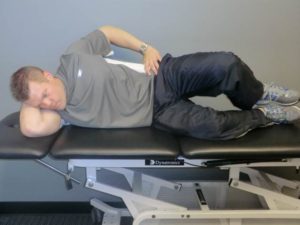Physical Therapy for Sciatica
Sciatica is an all too common condition that we see on a regular basis here at SSOR. Also known as “piriformis syndrome”, sciatica is a painful, aggravating diagnosis because it limits your ability to stand and walk and requires specific positions of relief, often sitting or lying down. People with this condition typically have low back and/or hip pain with associated pain and/or numbness, “buzzing,” or burning in the gluteals that can extend down the leg. The purpose of this post is to educate you on sciatica and of course, what you can do about it.
What is Sciatica?
The piriformis is a muscle deep in your hip, under your gluteals. Basically, it runs horizontally across your bottom on both sides. Directly behind the piriformis is the sciatic nerve. The sciatic nerve is a thick, broad nerve at this location. Because they are in such close contact, the piriformis can “rub” on the sciatic nerve, which causes the pain and numbness in the hip and possibly the back of the leg. That’s why sciatica is often discussed interchangeably with piriformis syndrome.

What Causes Sciatica?
Well, there are a host of potential causes. If you have a disc bulge or herniation, the pressure on the nerve can cause the pain and/or numbness. Stenosis, or narrowing of the foramen the nerve exits out of, also puts pressure on the nerve in a similar way. Muscle tightness and hip weakness can also contribute to sciatica because either of them can alter muscle length and strength and the lack of either strength or flexibility can irritate the piriformis muscle. Finally, there are a host of people that can get sciatica from trauma, like car accidents or stepping awkwardly off a curb for example.
Exercises for Sciatica
There are several potential treatments for this, but it really depends on the reason you are experiencing symptoms. Here’s a video link to “home remedies” you can try. A thorough evaluation by the physical therapists at SSOR will undoubtedly help you find out the true cause of your pain and discomfort. Activity modification and posture/ergonomics education are two basic but very important parts of treatment. Often, soft tissue work to the piriformis with a foam roller or lacrosse ball, stretching, and “nerve glides” are three DIY techniques you might try, all shown in the link above. Manual therapy to loosen a stiff spine and pelvis can be effective as well. Finally and perhaps most importantly, hip abductor and external rotator strengthening exercises (Figures 1 and 2 below) will help control both the femur and the pelvis to prevent aggravation of the piriformis. Things like ultrasound and electrical stimulation are completely useless for piriformis syndrome or sciatica, so if your current physical therapist is doing either of them, it’s probably time to find a new physical therapist.

Sidelying leg raise for gluteus medius strengthening. Lay against the wall and while keeping your heel against the wall, raise your leg up and down.
The physical therapists at SSOR are experts in biomechanical evaluation and assessment. Sciatica is definitely one condition that requires a thorough evaluation by a skilled, experienced physical therapist to find out the true cause of your symptoms and help you reduce pain. You shouldn’t live in pain. We have locations in Overland Park and Prairie Village to serve you. It would be a privilege to partner with you in your care.
Tags: exercises for sciatica, Kansas City, Overland Park, Physical Therapy, prairie village, sciatica, SSOR, treatment for sciatica

